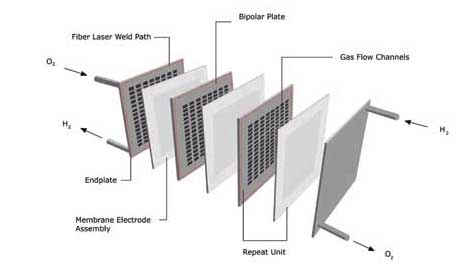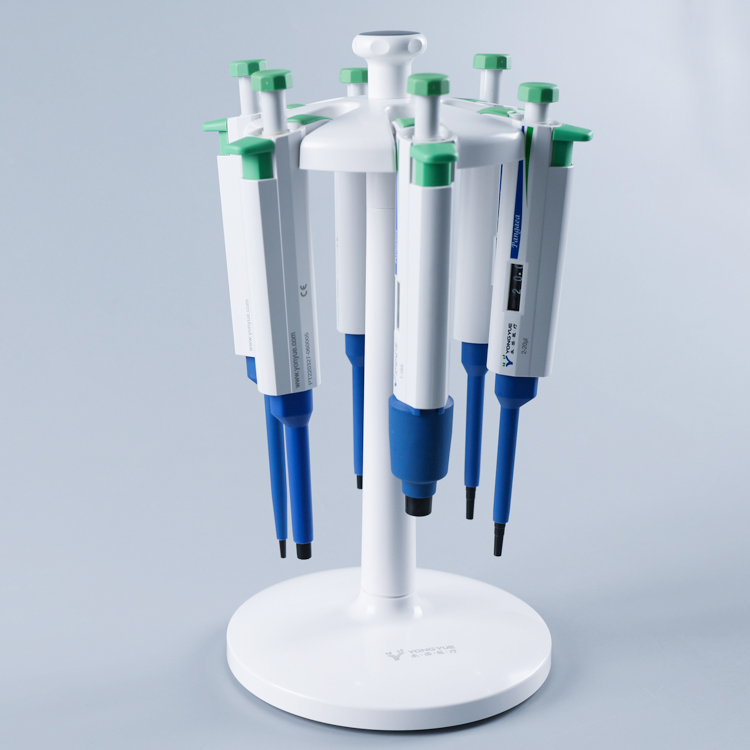Fuel cell technology is one of the most promising energy solutions currently, and it will greatly affect energy shortages and global warming. Fuel cells provide clean energy and can be used in environmentally friendly vehicles. They can also be widely used in space, marine, energy, chemical, manufacturing, pharmaceutical and electronics industries. Manufacturing fuel cell stack At present, in the manufacturing process of fuel cells, the welding of metal plates is the most time-consuming process: the welding length required for each metal plate in the fuel cell stack is about 1 meter, and the welding length of each environmentally friendly car is reached. About 400 meters. Optimizing the welding process can greatly save the manufacturing cost of the fuel cell. Economical sealing welding The main advantages of fiber laser welding compared to other laser welding techniques are high beam quality, output energy and power stability, greater power density and control, and lower total cost of ownership. The fiber laser has a high beam quality, so the focus of the beam is small and the corresponding energy density is high. This allows for very fast and efficient machining, enabling high aspect ratio welding. Compared to other laser sources, fiber lasers are capable of soldering at much lower heat input conditions, resulting in less deformation of the metal plate being welded. Fiber lasers have high energy stability (typically ±0.5%), which allows the solder joint profile to be consistent, easy to penetrate, and the root width of the solder joint is extremely low. Other laser technologies can also achieve such soldering, but fiber lasers can perform faster and higher quality soldering at lower operating costs. We believe that the low cost of standard 200 watt fiber laser welding technology enables it to be used in future fuel cell production to reduce costs. Another problem pointed out by some manufacturers is that when using high-yield welding with yttrium aluminum garnet (YAG) or CO2 lasers, "peaks" may occur. This is caused by the inherent instability of the fluid in the molten metal pool during high speed welding. Because it limits the production rate, it is considered a problem by some manufacturers. But if a standard 200 watt fiber laser is used, this problem will not occur even at a welding speed of 5 to 6 meters per minute, which is equivalent to an annual welding length of more than 2,500 kilometers. In a production environment, fiber lasers also have the advantage of extremely high cumulative operating time, and do not require consumables like other laser sources. For example, Nd:YAG lasers require regular replacement of flash lamps, while CO 2 lasers require constant supply of consumable gases. . In addition, fiber lasers have high electrical efficiency and consume less than one-tenth the power of Nd:YAG lasers, which greatly reduces the operating cost of soldering. They can be "real-time" soldered as required without first warming up like other types of lasers, further reducing energy consumption and inefficient working time. Because fiber lasers are sealed components, there is no need to replace the lights and re-adjust the mirrors, so maintenance costs are low, and each fiber laser can save thousands of dollars per year.
When there is liquid in the Pipette tip, do not place the pipette horizontally or upside down, so as to prevent the liquid from flowing back and corroding the piston spring.In the process of biological experiments, especially in the field of Cell Culture, the pipette is an indispensable laboratory instrument, and the pipette holder is also used very frequently on the laboratory ultra-clean bench or in the biological safety cabinet. The ease of use of the pipette and the pipette holder also affects the ease of experimental operation.
pipette drying rack,pipette stand for lab,pipette stand for sale,pipette holder for use,rack for pipette Yong Yue Medical Technology(Kunshan) Co.,Ltd , https://www.yonyuemedical.com
The world has recognized the enormous potential of this technology. In 2003, President Bush initiated the establishment of a hydrogen fuel start-up fund. To date, the US government has invested more than $180 million to support the development of fuel cell technology. Coupled with private start-up funds from companies such as Honda and Hyundai, the US has invested more than $280 million in this technology.
In order to realize the full potential of fuel cells, the key is to achieve large-scale commercial production in the next 5-10 years. In 2002, the typical cost of fuel cell power output per kilowatt of electrical energy was around $1,000. In order to be able to compete with other technologies, the manufacturing cost of fuel cells must be greatly reduced.
A fuel cell is an electrochemical energy conversion device that uses an externally added fuel (anode end) and an oxidant (cathode end) to generate electricity. This electrochemical reaction takes place in the electrolyte and produces energy. 
Usually a fuel cell unit produces a voltage value of less than 1 volt, so in practice it is common to stack them in a string to obtain the desired voltage. A typical fuel cell is typically constructed of a plurality of stainless steel sheets that must be welded together to form a fuel cell stack as shown.
Stretched view of fuel cell
Good soldering optimizes the functional area of ​​the battery and minimizes the deformation of each individual metal plate to control the deformation of the entire fuel cell stack.
The problems here can be attributed to the fact that conventional laser welding techniques are difficult to perform small size, clean and reliable welding at a reasonable production rate. To address these issues, mainstream fuel cell manufacturers are focusing on fiber laser welding technology.
In order to minimize the heat input of the fuel cell sheet to maintain its deformation within an acceptable range, a large aspect ratio weld (typically 3:1 or 4:1) is required. The superiority of fiber laser welding is that it is easy to achieve this in solder joint sizes of less than 200 mm. Therefore, the deformation of the metal sheets, which may occur when the metal sheets are stacked, can be minimized.
Metallographic analysis of "key holes" and large aspect ratio welds often reveals porosity problems in the weld, especially at the root of the weld. In fuel cell applications, the integrity of the weld is critical and complete sealing is a primary requirement. Low-quality soldering can severely degrade the life of the fuel cell and even leak hydrogen or other fluids. Experience has shown that fiber lasers have an exceptionally high energy density on the workpiece, making them particularly suitable for fuel cells, enabling consistently reliable, non-porous soldering.
in conclusion
Fiber lasers offer fuel cell manufacturers an attractive "green manufacturing" technology by achieving high productivity, high integrity and low operating cost soldering.
Research by mainstream fuel cell manufacturers shows that fiber laser welding will drive fuel cell technology from promising ideas to commercial solutions to the world's energy shortages and will play a vital role. 